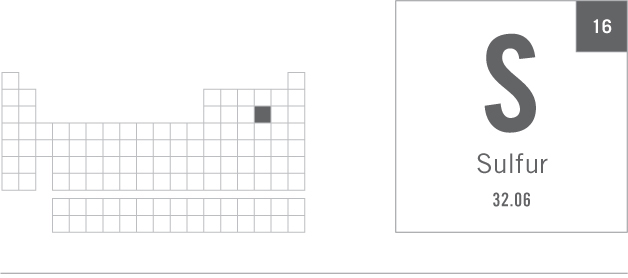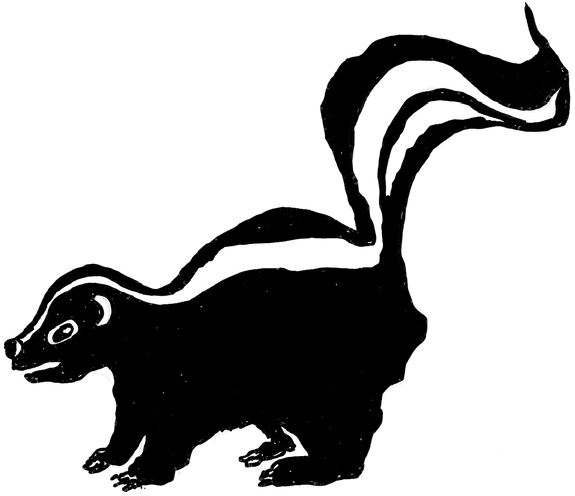Here’s yellow S, volcano born, its compounds stink like hell,
From scent of skunk and eggs so foul to garlic’s taste and smell.
Its acid—workhorse of our world,

Here’s yellow S, volcano born, its compounds stink like hell,
From scent of skunk and eggs so foul to garlic’s taste and smell.
Its acid—workhorse of our world,
ess
GROUP 16 NON-METAL
Sulfur is a yellow, non-metal solid that occurs naturally in elemental form near volcanoes. No two ways about it: many sulfur-containing compounds are very smelly! It’s no surprise then that the fires of hell have traditionally been filled with brimstone, the old name for sulfur.
Skunk scent is a yellow-tinted, oily liquid that contains a selection of malodorous, sulfur-containing chemicals called thiols. Thiols are compounds that contain a sulfur atom bonded to a hydrogen atom to make an SH group. The smell of rotten eggs is produced when bacteria break down the amino acid methionine in egg yolks, giving off hydrogen sulfide (H2S) gas. A blend of organic disulfides and trisulfides generates the taste and smell of garlic.

Sulfuric acid, H2SO4, is one of the most important industrial chemicals and is produced in greater quantities than any other chemical in the industrialized world. The production of everything from paints to paper, explosives to fertilizers, and fuels to detergents uses sulfuric acid. Perhaps its most important use is in the manufacture of phosphoric acid (H3PO4), which is needed to make essential phosphate fertilizers.
Keratin is the fibrous, structural protein of hair and nails. It’s rich in the amino acid cysteine. Each cysteine molecule contains a sulfur atom (as a thiol) that is capable of bonding with the sulfur atom of a neighboring cysteine. These disulfide bonds in your keratin help define your hair style: the more disulfide bonds there are, the curlier your hair will be!
ess-oh-too ess
Some manufacturers of certain foods and drinks add sulfur dioxide (SO2) to their products to keep bacteria and certain yeasts at bay. For example, winemakers often add sulfur dioxide as the potassium sulfite (or metabisulfite) salt, just before fermentation and again before bottling.
Vulcanization is the process of heating soft, sticky, natural rubber with sulfur. The sulfur atoms form cross-links, or bridges, between the rubber’s long-chain molecules. This produces a more durable, functional rubber that’s suitable for tires, hoses, and the soles of shoes. “Spock” . . . “vulcan” . . . get it?